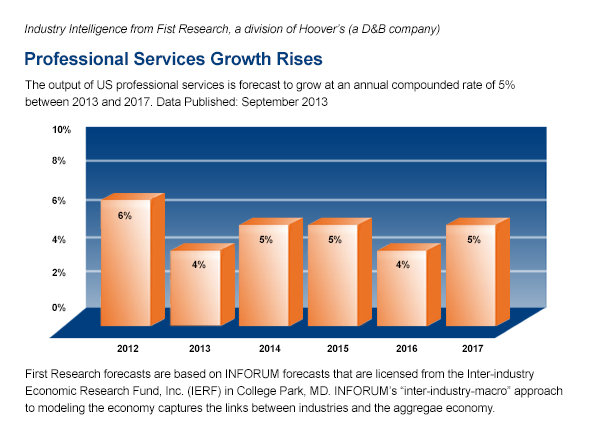
The last year was a growth year for many professional services organizations and 2014 will continue to be so, especially in the USA and South America, driven by the improving economic environment. With year-over-year growth measurably beginning at the turn of the 21st century, certain topics often surface with regularity. Below are the three most prevalent topics that had me digging and researching to learn more to determine their validity. With each of these trends, I link to a report that I believe best, and most succinctly, reports on the topic for additional reference.
Resource/Personnel Scarcity
Since 2010, the data has confirmed that the topic of STEM expertise scarcity (that has been discussed for at least a decade) is a real concern. Executives are growing more and more concerned — citing it as one of the most primary concerns in many benchmark reports. More so, year-over-year growth is now, finally, starting to illustrate the increasing shortage of talent. As cited in this blog post Three Ways for Professional Services Orgs to Tackle the Talent Cliff, by SPI Research, “It now takes longer to hire, train, and make employees billable. To couple with this added cost, we are seeing that professional services attrition is beginning to rise, and we expect it to reach nearly 20% in the next five years, meaning PS executives will face an increased challenge of talent management.” As predicted, this is partially caused by the number of professionals from the “baby boomer” era who are reaching retirement age.
To learn more, I recommend the terrific white paper, 3 Recommendations for Tackling the Talent Cliff by SPI Research.
The Sophisticated Client
Despite the market growth, PSOs are finding that they are dealing with an increasingly more sophisticated client who is demanding greater value for money from their investments and for projects to be delivered more quickly — reducing their time-to-value. A consequence of this is the greater focus on different ways to bill for services. The number of projects based upon the traditional method of “Time & Expenses” is reducing as clients push for more fixed fee contracts. However for a project to be fixed fee, it has to be fixed scope or there is a real danger of scope creep that would impact upon project margins.
The pressure for fixed fees and the shorter project timescales is resulting in an increasing need for PSOs to create packaged services, and for improved resource demand and capacity planning to maximise the value from their people.
Often automation tools are cited as a quicker solution for an organization to get clear visibility on how the client shift is impacting their project margins. While this paper describes this situation among a few other topics, I suggest reading TSIA’s (the Technology Service Industry Association) report, The State of Professional Services: 2013 for insight on how the Cloud, in particular, is pushing this sophistication and improving automation options.
Transitioning to Milestone Invoicing
The sophisticated client has more experience with a variety of professional services vendors, be it for their interactive marketing, product production, legal services, accounting, or outsourced projects. However a PSO plays into this world for the client, deliverable-based professional organizations have set a standard for a gated payment structure and the typical client is now expecting that.
For a PSO to successfully package their services for milestone delivery, invoicing and payment; there is a need to standardise their delivery approach for each service by defining processes and controls, creating templates and better sharing of knowledge and lessons learned. Greater consistency in delivery approach and quality will help to keep control over costs and therefore protect project margins.
As this transition has been progressively happening for the past decade there is not a lot of analysis on the state of particular phenomena. However, for additional insight I was a part of a webcast with NASCO recently that enlightened me to how a large PSO made this transition and the priorities and technologies they used to handle the big change. This informative webcast is 30-minutes long. It is called Changing the Game: From Time-Based Billing to Deliverable-Based Billing.
For the Radar: Value-Oriented Billing
This shared risk and reward approach to billing for services has been suggested for many years now– I remember this being tried whilst I was at E&Y in the late 1990’s. The idea that professional services organizations essentially invest in a project to deliver and to expect payment based on its performance is, of course, controversial. It’s a newer topic that is championed by only a few experts in the field and having an educated opinion on the subject is good for philosophical debate among peers or by the water cooler.
For value-oriented billing to be successful, it requires a true partnership between the client and the service provider; a good level of understanding of the clients business; and a clear set of metrics that allow measurement of success. It also has to be considered how other external factors that are outside the control of the PSO might impact upon these metrics. Value-oriented billing is likely to impact on revenue recognition as the success outcome may take months to achieve, whilst costs are still being incurred. This approach is clearly not applicable for all types of PSO or perhaps for those for whom the client relationship has just started but for firms of lawyers it is becoming more popular. However, for many project or service delivery professionals the concept is so foreign it’s been relegated to mythological…
For more information on Value-Oriented Billing, I found this article Pricing Services: Changing the Game (external website) very interesting.
I’d like to hear from you. What is your organization’s approach to tackling these trends? Share your thoughts by leaving a comment below.



